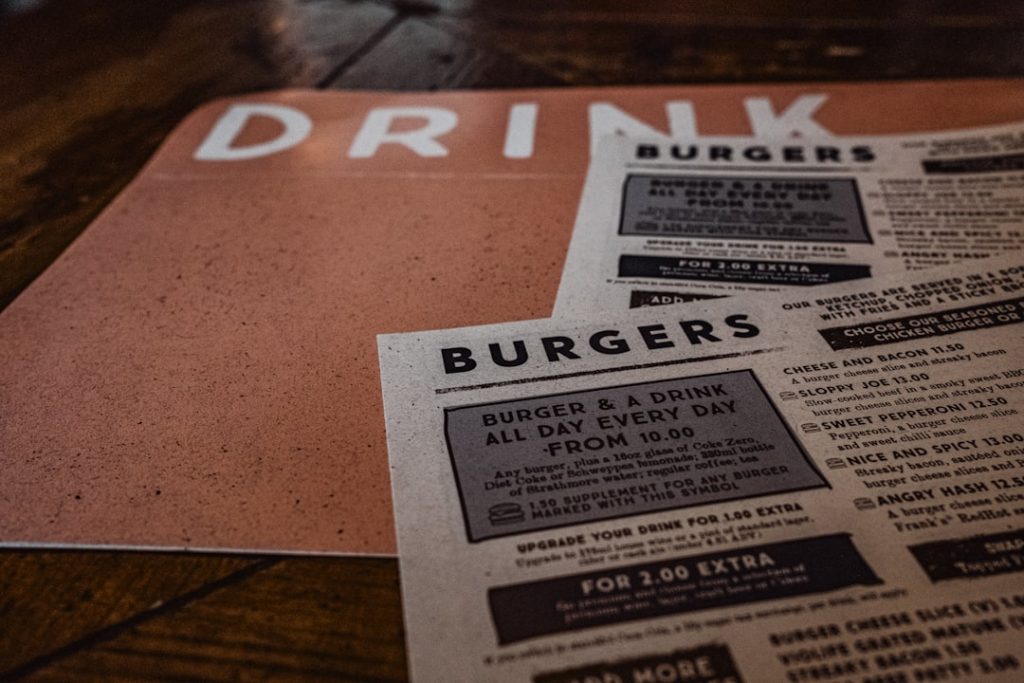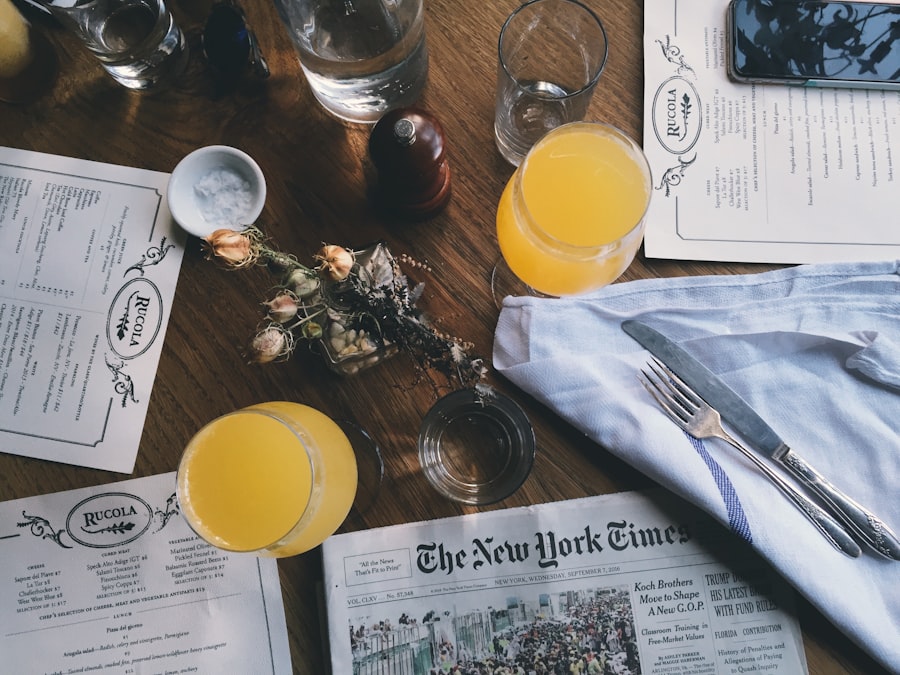In the digital age, a restaurant’s website serves as its virtual storefront, often forming the first impression for potential customers. A creatively designed website can significantly influence a diner’s decision to visit a restaurant, making it essential for restaurateurs to invest in an engaging online presence. The design should not only reflect the restaurant’s brand identity but also provide a seamless user experience that encourages exploration and interaction.
A well-crafted website can convey the ambiance, cuisine, and unique offerings of a restaurant, enticing visitors to step through the door. Moreover, the importance of mobile optimization cannot be overstated. With an increasing number of consumers using smartphones to search for dining options, a responsive design that adapts to various screen sizes is crucial.
This ensures that users can easily navigate the site, view menus, and make reservations regardless of the device they are using. Creative restaurant website design is not merely about aesthetics; it encompasses functionality, user experience, and brand storytelling, all of which work together to create a compelling online presence.
Key Takeaways
- Creative restaurant website design is essential for attracting and engaging customers online.
- Interactive menus and food galleries can enhance the user experience and showcase the restaurant’s offerings.
- Engaging storytelling and branding can help create a unique identity for the restaurant and connect with customers on a personal level.
- Online reservation and ordering systems can streamline the customer experience and make it easier for them to interact with the restaurant.
- Showcasing chef profiles and behind-the-scenes content can humanize the restaurant and build trust with customers.
Incorporating Interactive Menus and Food Galleries
One of the most effective ways to engage visitors on a restaurant’s website is through interactive menus and visually appealing food galleries. An interactive menu allows users to explore dishes in detail, often featuring high-quality images, descriptions, and even nutritional information. This not only enhances the user experience but also helps potential customers visualize their dining choices.
For instance, a restaurant specializing in gourmet burgers might include mouth-watering images of each burger option alongside descriptions that highlight unique ingredients and preparation methods. Food galleries can further elevate this experience by showcasing the restaurant’s signature dishes in an artistic manner. High-resolution photographs that capture the colors and textures of the food can entice visitors and stimulate their appetites.
Additionally, incorporating user-generated content, such as photos shared by customers on social media, can create a sense of community and authenticity. By allowing visitors to interact with the menu and view stunning food photography, restaurants can effectively draw in customers and encourage them to make a reservation or place an order.
Utilizing Engaging Storytelling and Branding
Storytelling is a powerful tool in restaurant marketing, allowing establishments to connect with their audience on a deeper level. A well-crafted narrative about the restaurant’s origins, its culinary philosophy, or the inspiration behind its dishes can resonate with potential diners. For example, a farm-to-table restaurant might share stories about its partnerships with local farmers, emphasizing sustainability and freshness.
This not only builds credibility but also aligns with the values of consumers who prioritize ethical dining choices. Branding plays a crucial role in this storytelling process. The visual elements of a website—such as color schemes, typography, and imagery—should reflect the restaurant’s identity and ethos.
A fine dining establishment may opt for an elegant design with muted colors and sophisticated fonts, while a casual eatery might choose vibrant colors and playful typography to convey a fun atmosphere. Consistency in branding across all platforms, including the website, social media, and physical location, reinforces recognition and loyalty among customers.
Implementing Online Reservation and Ordering Systems
In today’s fast-paced world, convenience is key for diners. Implementing an online reservation system allows customers to secure their tables effortlessly, enhancing their overall experience. A user-friendly interface that enables guests to select their preferred date and time can significantly reduce friction in the booking process.
Additionally, integrating features such as confirmation emails or SMS reminders can further streamline the experience and minimize no-shows. For restaurants offering takeout or delivery services, an online ordering system is essential. This system should be intuitive and efficient, allowing customers to browse the menu, customize their orders, and complete transactions seamlessly.
For instance, a pizzeria might allow customers to choose their crust type, toppings, and even add special instructions for preparation. By providing these conveniences online, restaurants can cater to the evolving preferences of consumers who seek quick and easy dining solutions.
Showcasing Chef Profiles and Behind-the-Scenes Content
Highlighting the culinary talent behind a restaurant can create a personal connection with diners and enhance their dining experience. Chef profiles that include biographies, culinary backgrounds, and personal philosophies can humanize the brand and foster trust among potential customers. For example, a chef who has trained in Michelin-starred kitchens may share insights into their cooking techniques or inspirations for menu items, adding depth to the dining experience.
Behind-the-scenes content is another effective way to engage visitors. This could include videos or photo galleries showcasing the kitchen in action, food preparation processes, or even staff training sessions. Such transparency not only builds credibility but also allows diners to appreciate the effort that goes into creating their meals.
By sharing these glimpses into daily operations, restaurants can cultivate a sense of authenticity that resonates with customers who value quality and craftsmanship.
Creating a Blog or Newsletter for Food and Lifestyle Content
A blog or newsletter can serve as an invaluable tool for restaurants looking to engage with their audience beyond just menu offerings. By creating content that explores food trends, cooking tips, or seasonal recipes, restaurants can position themselves as authorities in the culinary space while providing value to their readers. For instance, a restaurant might publish articles on how to pair wines with specific dishes or share insights into sourcing local ingredients.
Additionally, newsletters can keep customers informed about upcoming events, special promotions, or new menu items. This direct line of communication fosters loyalty and encourages repeat visits. By offering exclusive content or discounts to newsletter subscribers, restaurants can incentivize sign-ups while building a community around their brand.
Engaging content not only drives traffic to the website but also enhances customer relationships by keeping diners informed and connected.
Using Social Media Integration for User Engagement
Social media platforms are powerful tools for driving engagement and building community around a restaurant’s brand. Integrating social media feeds directly into the website allows visitors to see real-time updates about menu changes, special events, or customer interactions. This dynamic content can create a sense of urgency and excitement that encourages potential diners to visit in person or follow the restaurant on social media.
Moreover, encouraging user-generated content through social media campaigns can amplify engagement further. Restaurants can create hashtags for customers to use when sharing their dining experiences online or run contests that incentivize patrons to post photos of their meals. By showcasing this content on their website or social media pages, restaurants not only celebrate their customers but also create a vibrant online community that fosters loyalty and encourages word-of-mouth marketing.
Incorporating Customer Testimonials and Reviews for Credibility
Customer testimonials and reviews are critical components of building trust in any business, particularly in the competitive restaurant industry. Featuring positive reviews prominently on a restaurant’s website can provide social proof that influences potential diners’ decisions. For instance, displaying snippets from popular review platforms like Yelp or TripAdvisor can reassure visitors about the quality of food and service they can expect.
Additionally, creating a dedicated testimonials page where satisfied customers share their experiences can further enhance credibility. Restaurants might consider including photos of happy diners alongside their testimonials to add authenticity. By actively encouraging feedback from patrons and showcasing it on their website, restaurants demonstrate their commitment to customer satisfaction while fostering an environment of transparency that resonates with new visitors seeking dining options.
In conclusion, creative restaurant website design encompasses various elements that work together to create an engaging online presence. From interactive menus to storytelling and social media integration, each aspect plays a vital role in attracting and retaining customers in an increasingly digital world. By prioritizing these strategies, restaurants can effectively enhance their visibility and appeal while fostering lasting connections with their audience.
FAQs
What are some key elements of a well-designed restaurant website?
Some key elements of a well-designed restaurant website include high-quality images of the food and restaurant, easy-to-navigate menu and reservation options, mobile responsiveness, and clear contact information.
How can a restaurant website incorporate online ordering and delivery options?
A restaurant website can incorporate online ordering and delivery options by integrating with third-party delivery services or by implementing their own online ordering system with options for delivery or pickup.
What are some effective ways to showcase the menu on a restaurant website?
Some effective ways to showcase the menu on a restaurant website include using high-quality images of the dishes, organizing the menu into categories, providing detailed descriptions of the dishes, and offering the option to download a PDF version of the menu.
What are some best practices for optimizing a restaurant website for search engines?
Some best practices for optimizing a restaurant website for search engines include using relevant keywords in the website content, optimizing images with descriptive alt text, creating a Google My Business listing, and obtaining backlinks from reputable sources.
How can a restaurant website incorporate customer reviews and testimonials?
A restaurant website can incorporate customer reviews and testimonials by featuring them on a dedicated testimonials page, integrating them into the homepage or menu pages, and encouraging satisfied customers to leave reviews on popular review platforms like Yelp or Google.


